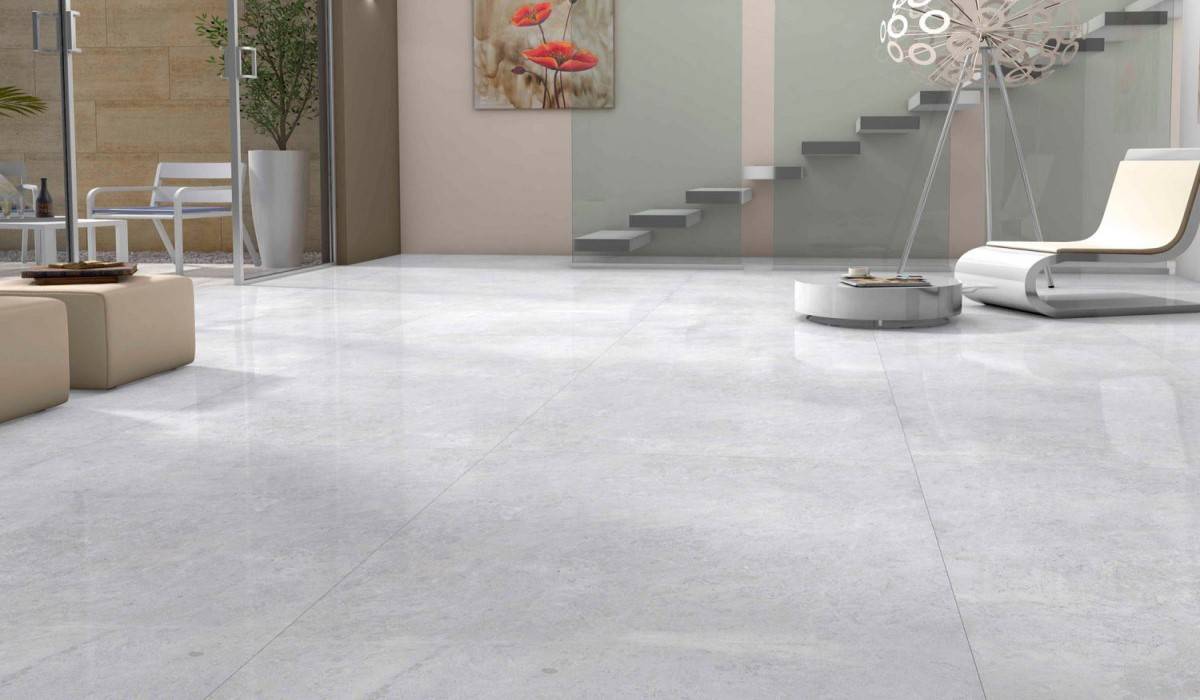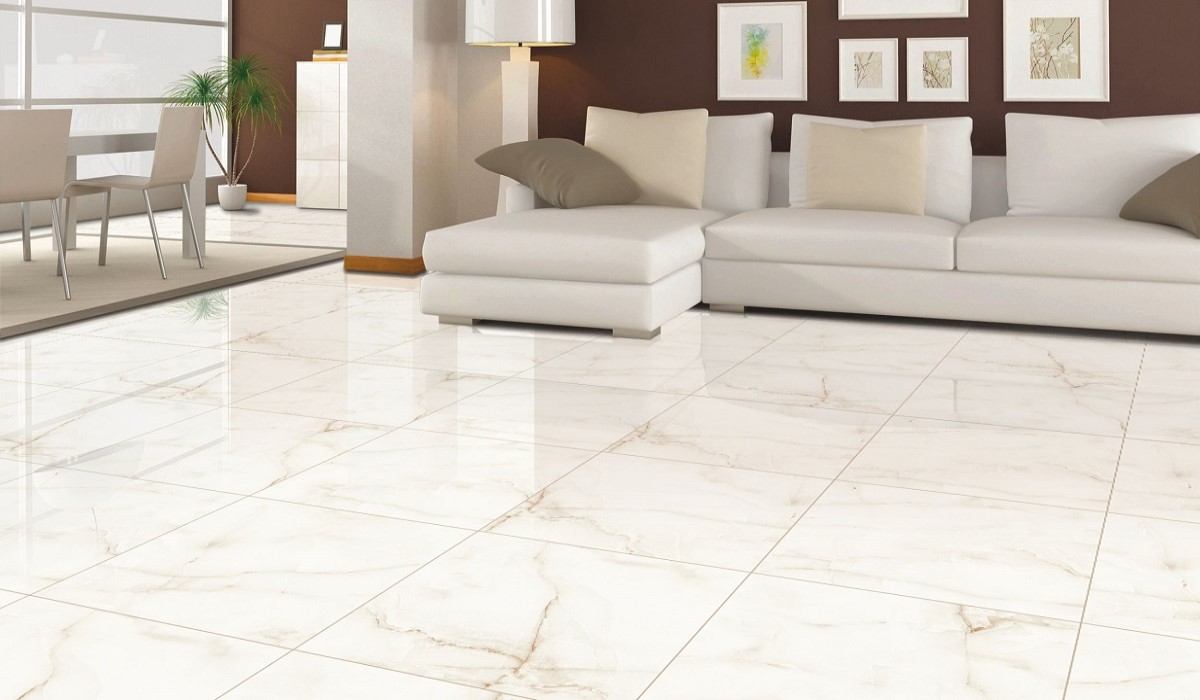In addition to the visual differences between ceramic and vitrified ceramic tiles, there are a few more significant variances. This can include composition, maintenance, and usage differences, as well as the pricing difference between ceramic and vitrified tiles. In terms of composition, there is a clear contrast between vitrified tiles and ceramic tiles. Ceramic tiles are produced by combining clay and water, followed by a high-temperature fire in a kiln. The coating that was manufactured gives these tiles their unique sheen.
Ceramic tiles may be used not just for floors but also for walls, and they are available in a broad variety of earth-toned hues and patterns. Considering that ceramic floor and wall tiles are composed of clay, what precisely are vitrified tiles? In their manufacturing, clay and a range of other minerals and solvents are employed. When the mixture is baked at high temperatures, a glossy substrate develops, which adds to its distinctively smooth feel. Glazed ceramic tiles may be utilized not just for flooring, but also for walls, countertops, and backsplashes. This is due in part to the fact that they are durable and available in a broad range of hues, either of which may serve to enhance the color palette of a kitchen or bathroom that is otherwise monotonous. The utilization of patterned ceramic tiles inlaid into the floor with solid-colored tiles can be utilized to create a wonderful decorative foundation for your home's interior. Vitrified tiles are often used as flooring because they are normally quite durable, can be laid in close proximity to one another over the floor, and are accessible in huge quantities. These qualities make vitrified tiles excellent for flooring applications. They are aesthetically equivalent to marble and granite and provide a less expensive alternative for flooring for those who desire the same style. When compared to the cost of ceramic tiles, vitrified tiles are not much more expensive. Both varieties of tile are reasonably priced. Although these flooring materials are less expensive than alternatives such as granite and marble, their functionality is not diminished in any way. In contrast, ceramic tiles are frequently considerably less expensive than the other alternative.
 Ceramic floor tile in Ethiopia
Ceramic floor tile in Ethiopia
Ceramic tiles are easy to install and repair should they get damaged. However, the joints may be somewhat far from one another, allowing grout and dirt to build in the gaps between the joints. After installation, vitrified marble tiles require practically no setting time and may be utilized immediately. These tiles have more tightly spaced seams than ceramic tiles, which makes their removal considerably more difficult. Ceramic tiles are a good option for tiling or flooring in high-traffic areas, such as kitchens and bathrooms, because they require little maintenance. Soap and warm water are almost always helpful for eliminating the majority of dirt and grime that accumulates. The glaze prevents scratches and stains from entering the surface by acting as a barrier. Due to its low cost and high durability, vitrified tiles are the material of choice for both commercial and residential applications. Since they are nearly impermeable, there is no need to worry about stains or waterlogging when utilizing them. In addition, they retain their color well over time. If you can choose between vitrified tiles and ceramic tiles for the interior of your bathroom, you should go for vitrified tiles. A vitrified tile is a form of ceramic tile with an extremely low amount of porosity. Using a process called "vitrification," forty percent clay and sixty percent silica are combined to produce these tiles. These tiles are the ideal option for both residential and commercial establishments because of their longevity, minimum maintenance requirements, and resistance to wear and scratching. It is crucial to select the proper blocks for the task, taking into account the necessities and the project's objectives. If you are familiar with tiles and can distinguish between the many varieties, the work at hand will be a lot easier to complete.
ceramic tiles vitrified
When picking tiles, the decision between ceramic and vitrified tiles is one of the most important practical considerations. Tiles are made from clay that has been roasted or burned at extremely high temperatures in a kiln with the addition of particular minerals and solvents. Throughout this process, the glaze on the tile and the clay element of the tile, known as the biscuit, must be set and solidified. The glaze is simply an extra layer of molten glass that is applied to the top of the tile prior to firing. After baking, the unglazed tile strengthens and waterproofs the tile's top surface. Ceramic tiles can be glazed or unglazed; not all ceramic tiles are glazed. Without the glaze, ceramic tiles are less water-resistant and have a coarser texture. Glazed ceramic tiles are an excellent choice for bathrooms and other moist spaces in residential structures. Vitrified tiles are ceramic tiles with little porosity that are extremely durable, smooth, and glassy. Therefore, they cannot absorb water. "Vitrifying" refers to the process of generating glass or a substance that resembles glass by heat and fusing. Vitrified tiles, which have a water absorption rate of 0.5 percent or less and resemble glass, are made from a mixture of forty percent clay and sixty percent silica. With this level of water absorption, a glaze may not be essential for vitrified tiles.
There are several ways to classify the porosity of vitrified tiles, from non-vitreous and semi-vitreous (the most absorbent) to vitreous and impermeable (least absorbent). Vitrified tiles are a more durable option for corporate, commercial, and residential constructions - both inside and outdoors - in high-traffic areas since they are scratch, stain, and abrasion resistant and last for a very long period. Numerous interior and exterior housing designs include tiles. The most prevalent of these materials is ceramic, which may be subdivided into natural ceramic and vitrified tiles. Although the vitrified tiles are made to seem glossier and less porous, they resemble pottery more. If you are unaware of the key characteristics between ceramic and vitrified, selecting one may be difficult. The purpose of this piece is therefore to clarify these disparities. Vitrified tiles are made using the vitrification process, which tries to reinforce the tiles, as suggested by their name. Despite being glossier, harder, less absorbent, and less porous than ceramic tiles, vitrified tiles seem similar to ceramic tiles. This is due to the mix of silica, quartz, and feldspar, which gives the material a glassy aspect and makes the tiles more appealing. The composition is produced prior to its firing in the kiln.  Due to the inclusion of glass components in their production, vitrified tiles have a glassier feel than ceramic tiles. Also utilized is a lesser quantity of clay than in ceramic tiles. Before heating the clay, the dye is mixed with it to produce a range of colors. If you scrape the vitrified tiles, their color will seem homogeneous throughout. The process increases the durability of vitrified tiles. Even though they may be used for the same tasks, vitrified tiles are widely employed in commercial buildings despite the possibility of water damage. They appear reflective and glass-like. In contrast, ceramic tiles are less prevalent inside dwellings than in outside settings. Their variable water absorption rates—ceramic absorbs more water—influence their applications. Vitrified tiles are composed of clay, silica, feldspar, and quartz, whereas ceramic tiles are composed of a solvent and natural clay. Since vitrified is composed of glass components, its texture is smoother than that of ceramic. Nevertheless, ceramic porcelain tiles may be made glossy by glazing. A wide variety of ceramic and vitrified tiles are available in our company, contact us for more information.
Due to the inclusion of glass components in their production, vitrified tiles have a glassier feel than ceramic tiles. Also utilized is a lesser quantity of clay than in ceramic tiles. Before heating the clay, the dye is mixed with it to produce a range of colors. If you scrape the vitrified tiles, their color will seem homogeneous throughout. The process increases the durability of vitrified tiles. Even though they may be used for the same tasks, vitrified tiles are widely employed in commercial buildings despite the possibility of water damage. They appear reflective and glass-like. In contrast, ceramic tiles are less prevalent inside dwellings than in outside settings. Their variable water absorption rates—ceramic absorbs more water—influence their applications. Vitrified tiles are composed of clay, silica, feldspar, and quartz, whereas ceramic tiles are composed of a solvent and natural clay. Since vitrified is composed of glass components, its texture is smoother than that of ceramic. Nevertheless, ceramic porcelain tiles may be made glossy by glazing. A wide variety of ceramic and vitrified tiles are available in our company, contact us for more information.



